With just a few clicks, you can now set up critical alarms and notifications for HeatWave MySQL DB Systems using the OCI Database Management service.
There’s no need to rely on IT teams or be a monitoring expert. You can easily implement Oracle-recommended alarms with predefined rules, thresholds, and conditions to effectively monitor your databases. These configurations help ensure compliance with best practices and detect potential issues or deviations from the recommended (gold standard) settings. This feature also enables proactive monitoring, ensuring that your databases operate efficiently, securely, and in line with Oracle’s best practices for database monitoring.
The OCI Database Management service transforms what was once a manual process into a seamless, effortless task:
- Predefined alarm definitions and thresholds: This includes a list of predefined in-context alarm definitions and thresholds based on recognized best practices for HeatWave MySQL, which contain a specific set of metrics for a specific purpose.
- Customization capability: While the contextual alarm definition provides a standard set of rules, it also enables customization to meet the specific needs and requirements of the Database Administrator, DevOps or the organization. Using this feature, administrators can adjust thresholds or rules based on their unique environment.
- Fleet level configuration: Using alarm definitions, you can standardize monitoring settings across your enterprise by specifying the monitoring settings once and applying them to other database targets. You can save, edit, and apply these configurations across one or more databases or group of databases within a compartment.
- Alarm thresholds: Each rule in the definition is associated with a severity level, such as critical, warning, or informational. This helps prioritize responses and actions based on the severity of the issue detected.
- Notification mechanisms: The alarm definitions workflow allows you to specify how alerts are to be delivered to the appropriate personnel or monitoring systems. Common notification mechanisms include the topics that you subscribed to. A topic is an OCI Notifications service resource, which acts as a communication channel for sending messages to its subscriptions (endpoints) such as email and text messages.
Getting started
In the OCI console, navigate to Observability & Management, Database Management, and on the Fleet summary page, click the name of your database to go to the Managed database details page. You can find Alarm definitions listed in the Resources section under Administration.
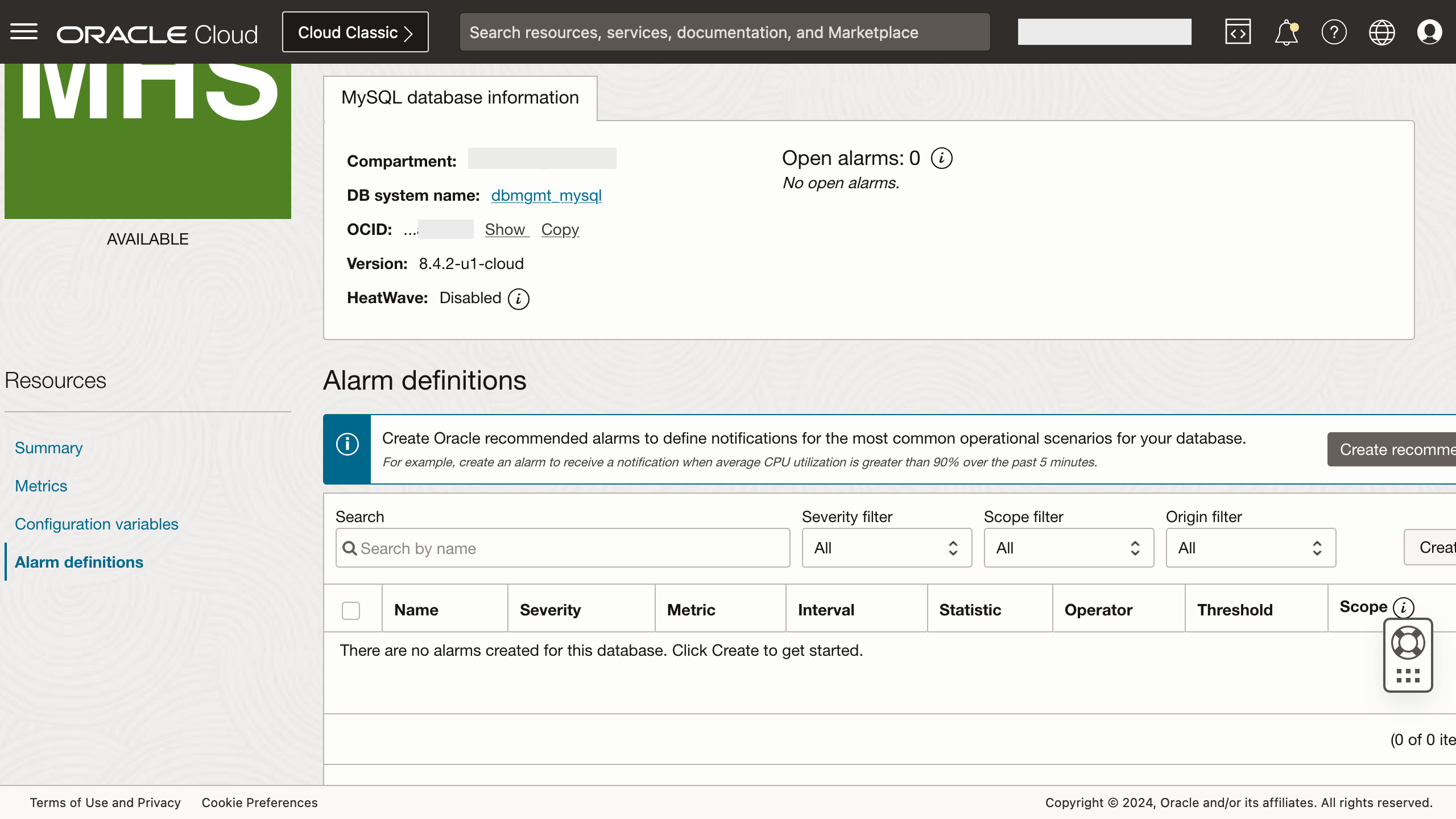
Clicking this link displays the list of alarm definitions that you’ve created for a specific database. If you don’t have any created, then you can use the options available in the Create menu to create Oracle-recommended alarms or create a custom alarm definition.
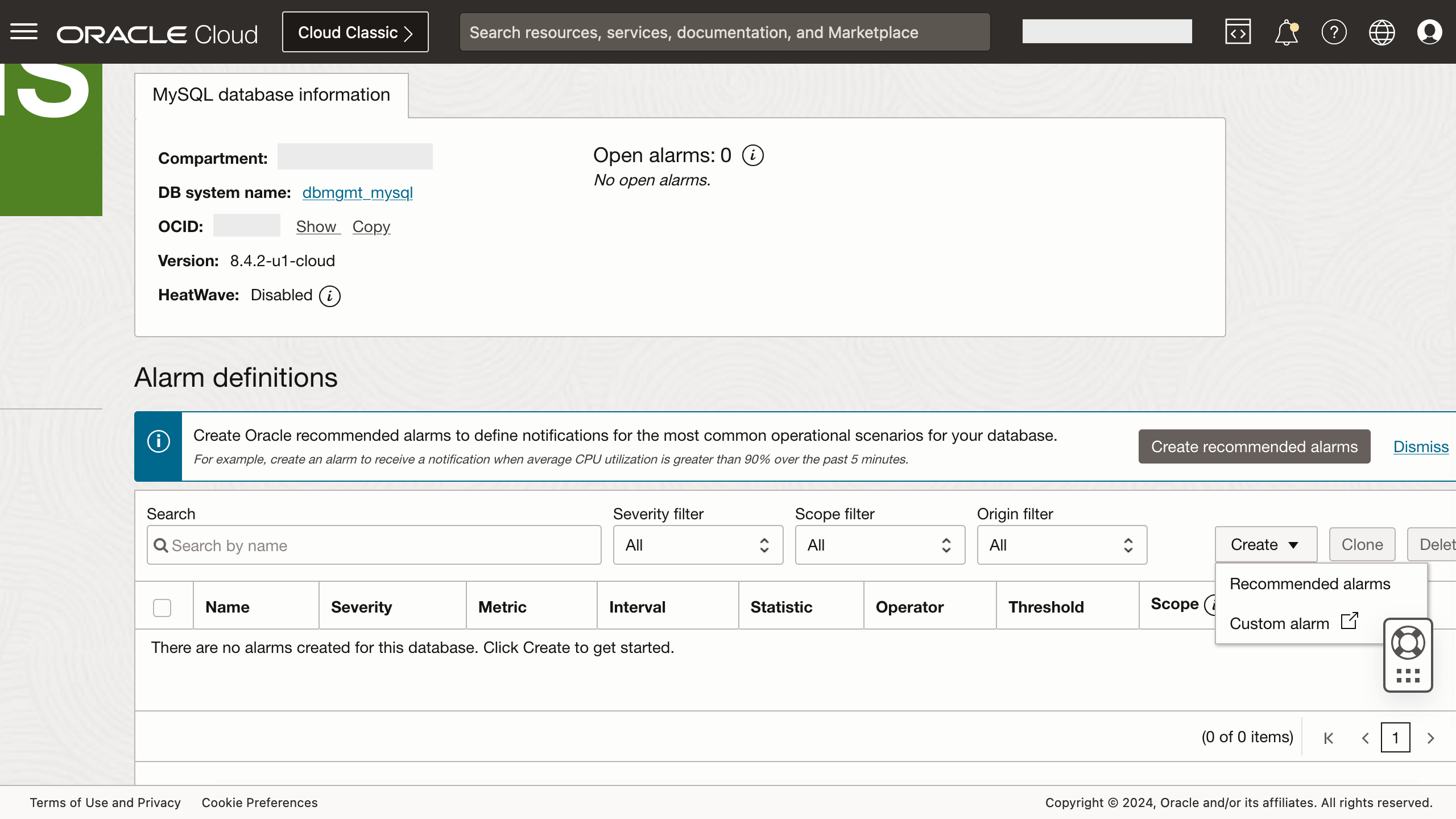
When you click Recommended alarms, a panel is displayed, allowing you to create the Oracle-recommended alarm definition. This workflow combines creating the alarm or event rule and notifications on a single screen. The values for the Oracle-recommended alarms are filled in automatically to help you get started. This includes the alarm name, severity, interval, and the threshold, which specifies when the alarm is triggered.
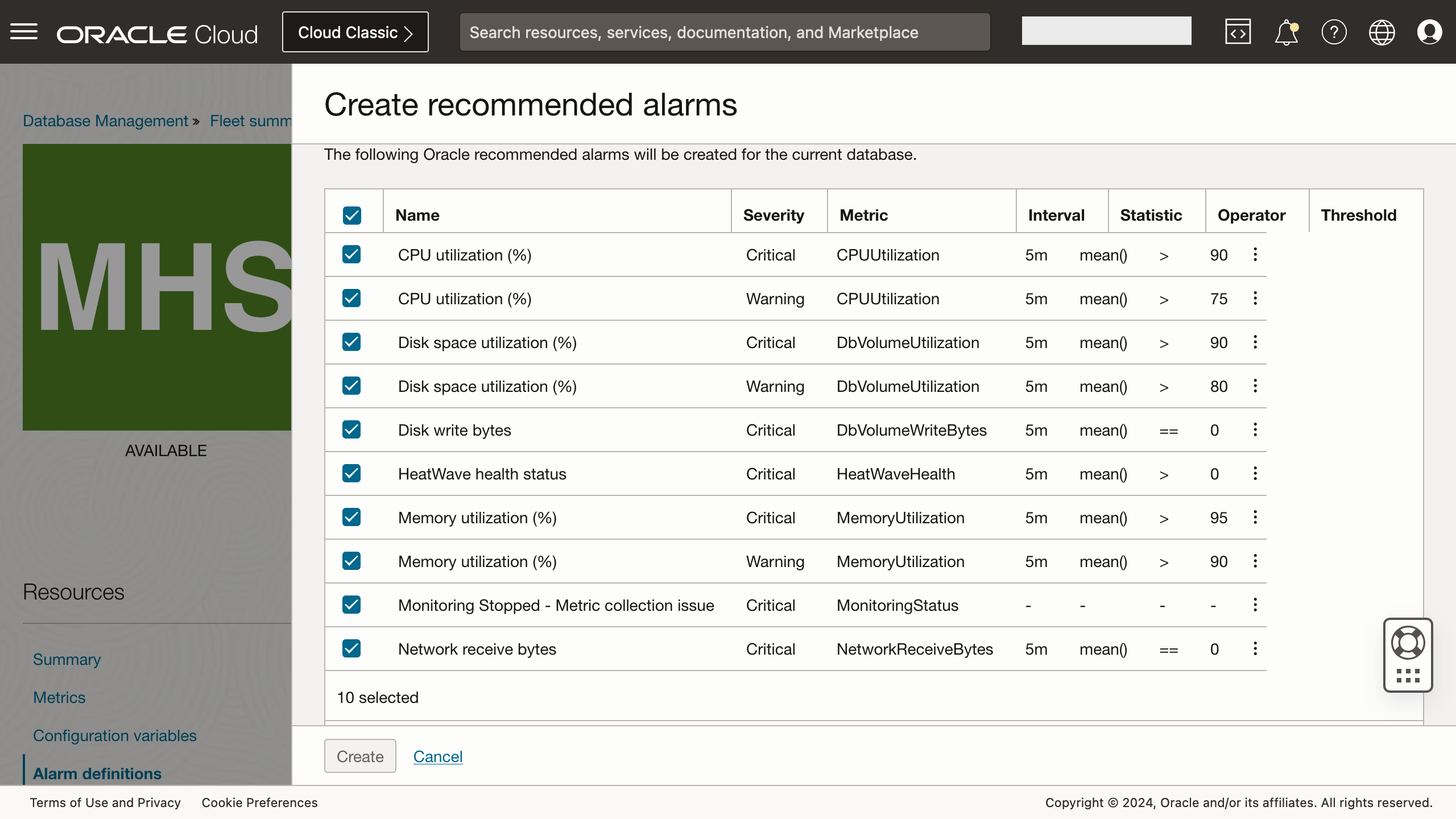
In the next section, you can select an existing topic, which shows you all the destinations configured for that topic or create one.
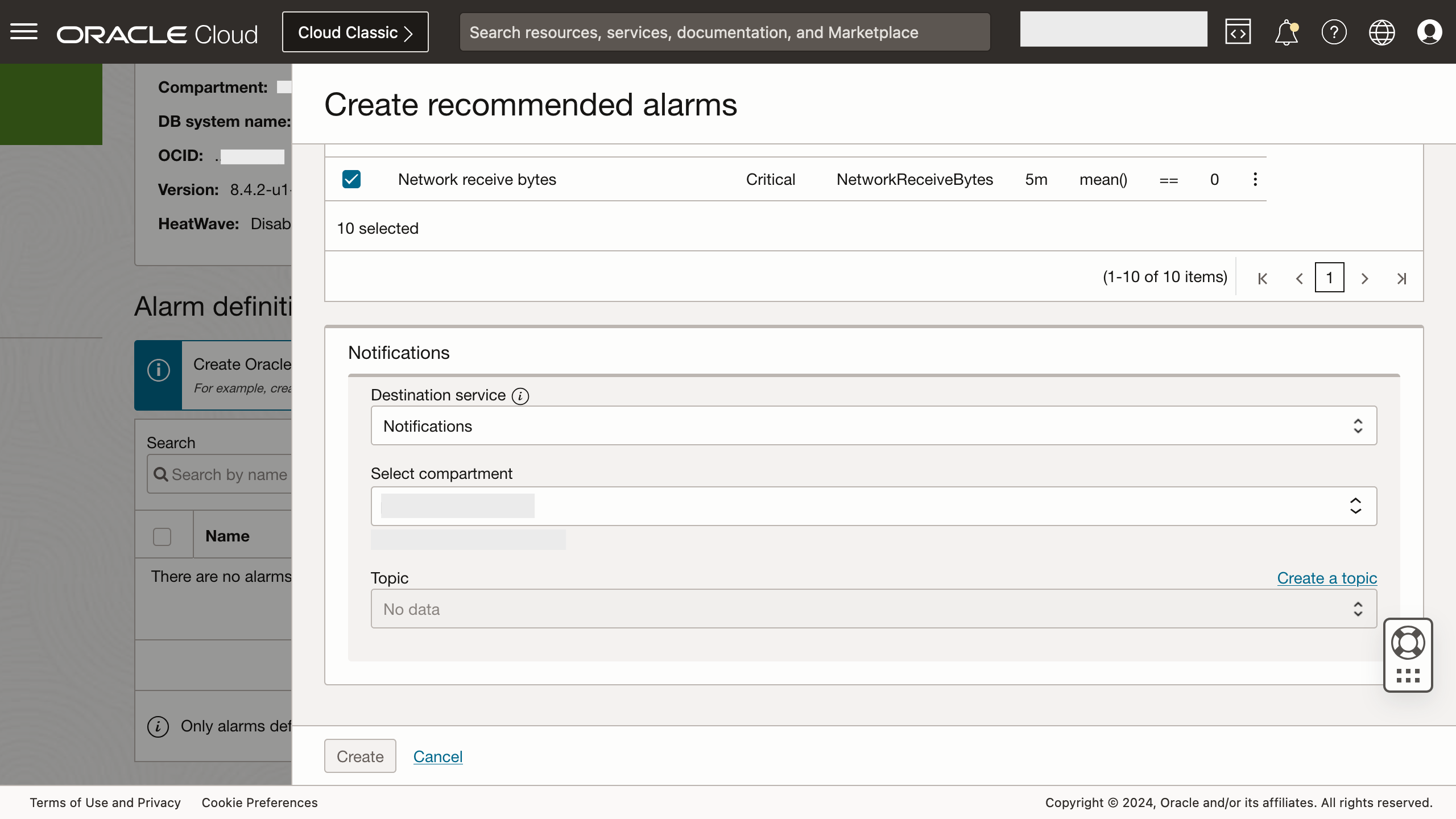
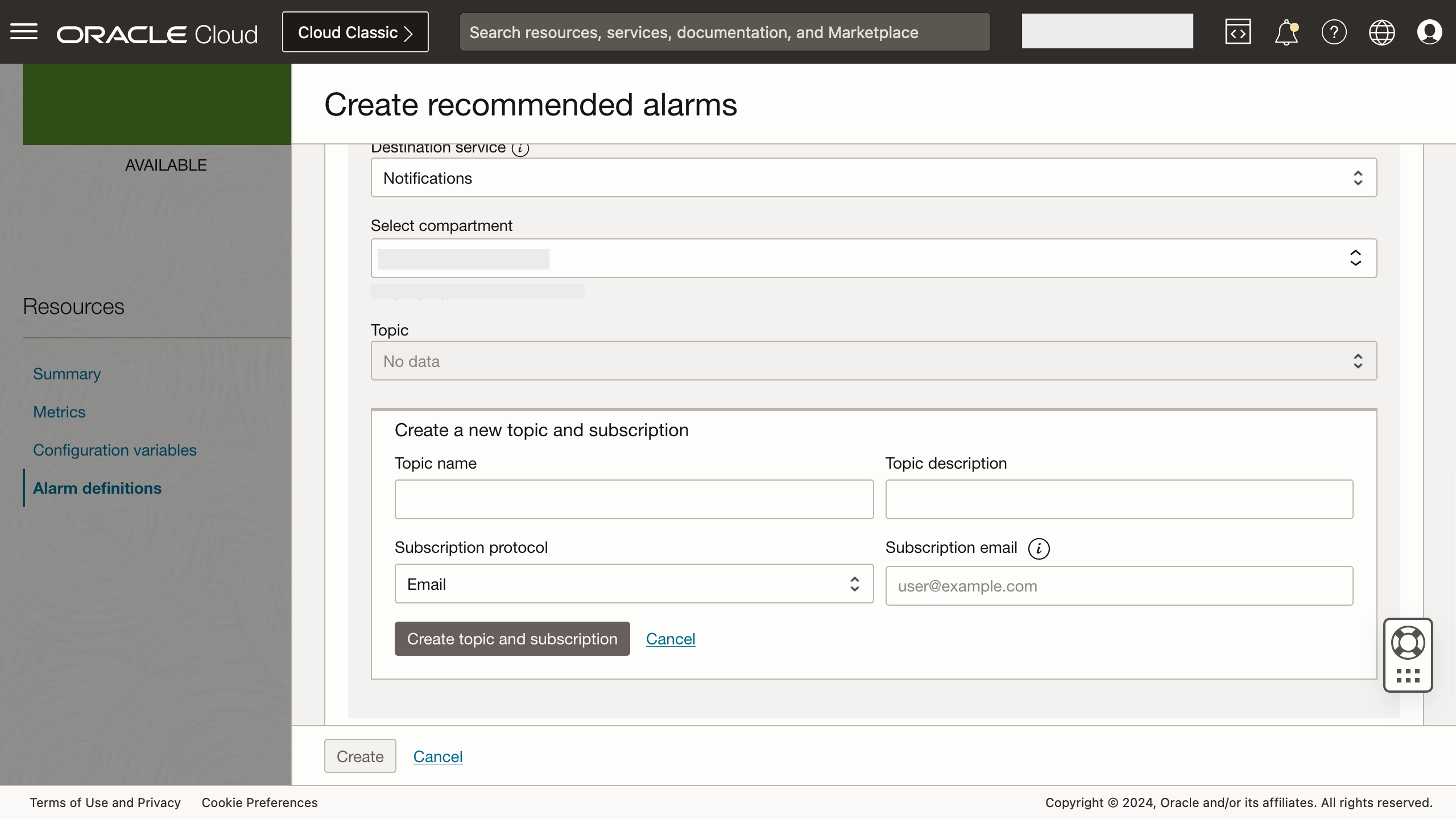
Here’s a scenario that illustrates the use of Oracle-recommended alarms.
You want to monitor the storage space in your database and to do so, you can use the Oracle-recommended Disk space utilization (%) – Critical and Disk space utilization (%) – Warning alarms. These alarms use the “DbVolumeUtilization” metric and you can use the preconfigured alarm values or click the Actions icon ( ) for the alarm and select Edit threshold to edit the threshold and other values. An alarm is triggered and you receive a notification when the space used is greater than or equal to the defined threshold value.
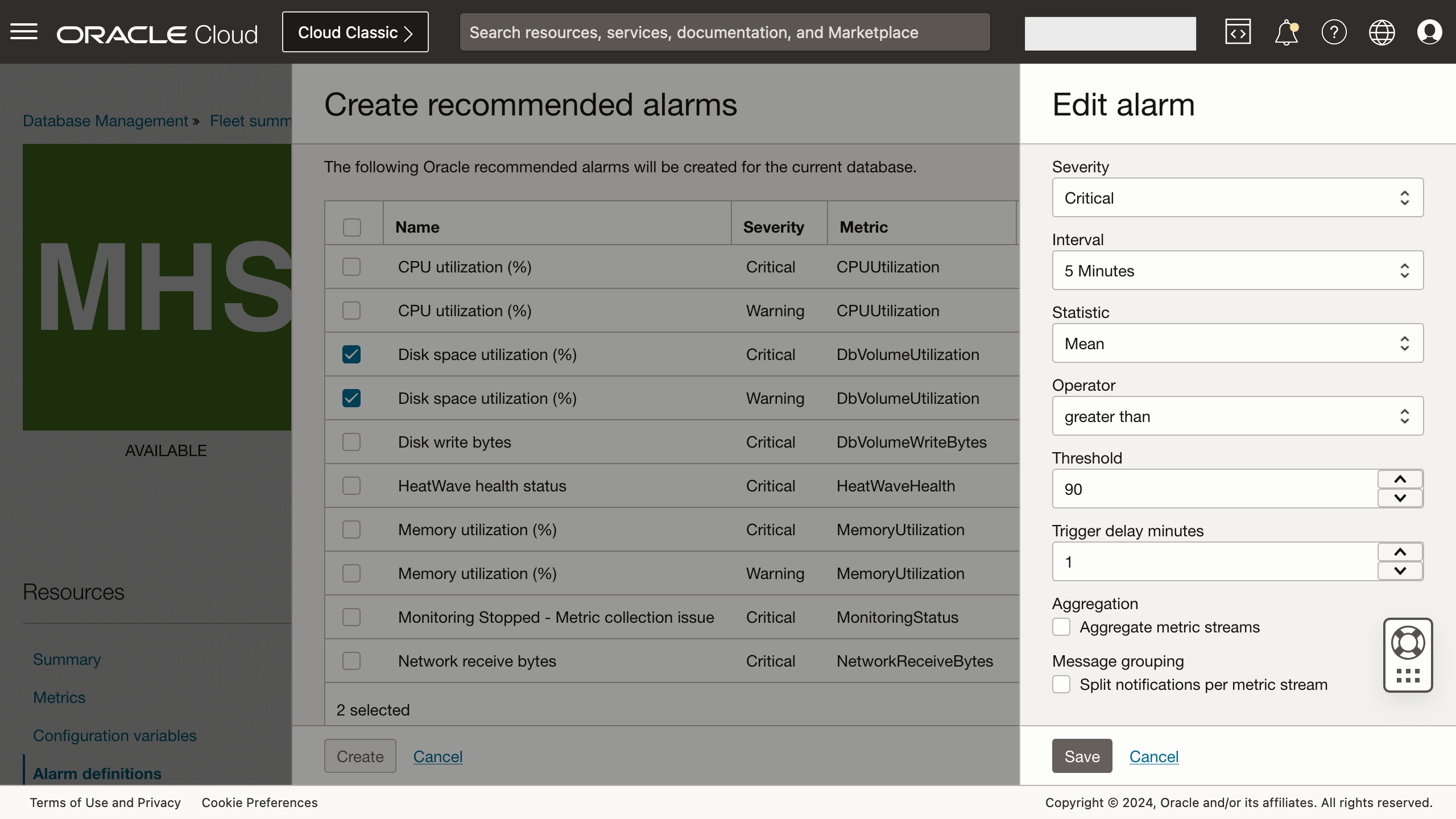
If the recommended alarm options aren’t sufficient, click Custom alarm to access the complete set of alarm creation options in the OCI Monitoring service.
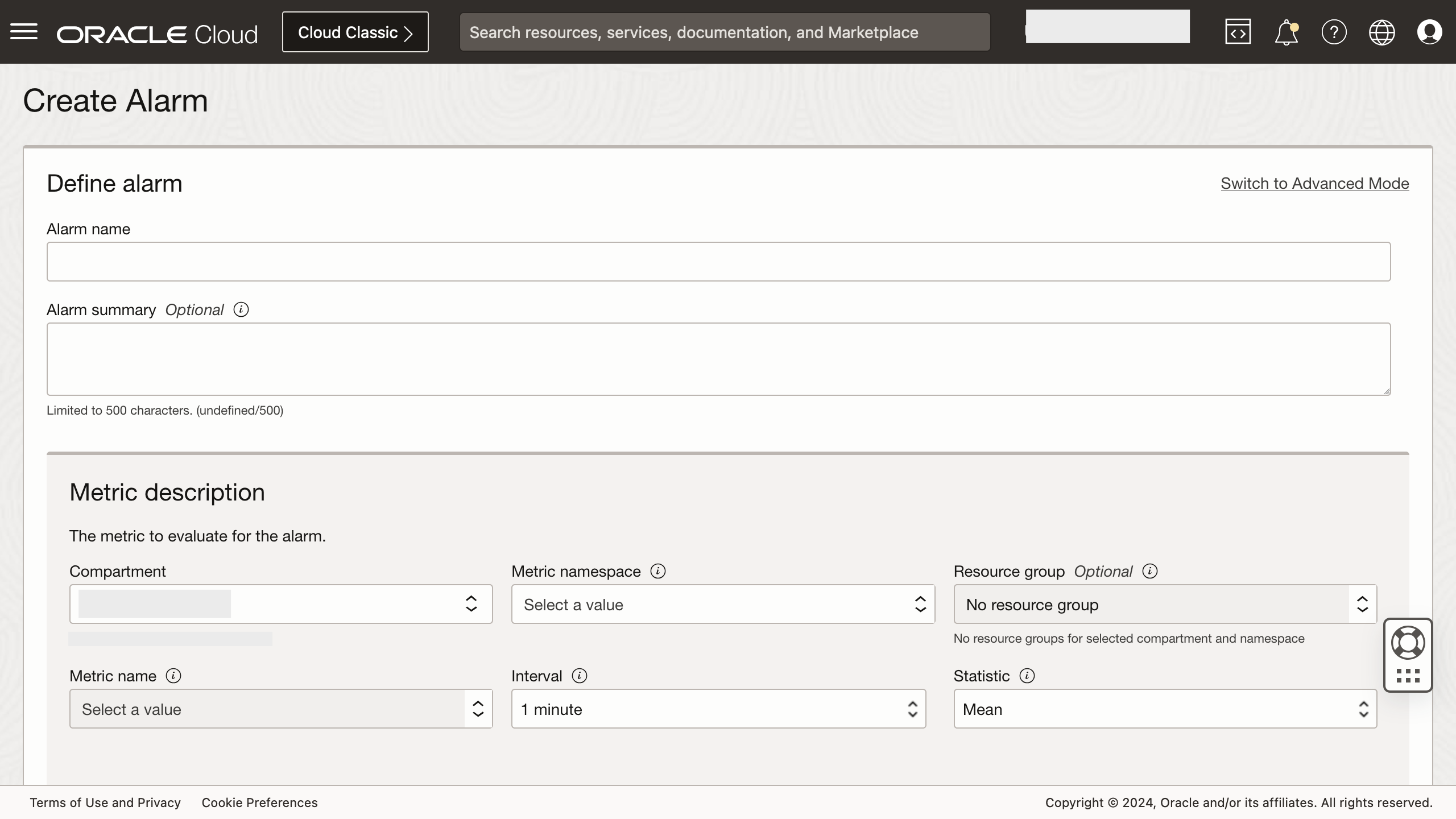
You can also clone an alarm definition to apply an existing configuration across one or more databases. You can select a desired alarm configuration and when you click the Clone button, a panel is displayed, allowing you to perform the clone operation. In the Clone alarms panel, select the Clone to compartment option and select a compartment to clone the alarm and apply the configuration to all the databases in the compartment.
In the Clone alarms panel, select the Clone to selected database option and select the databases to clone the alarm and apply the configuration to the selected databases.

Finally, you can delete the created alarm definitions, if required, by selecting the alarms and clicking the Delete button.
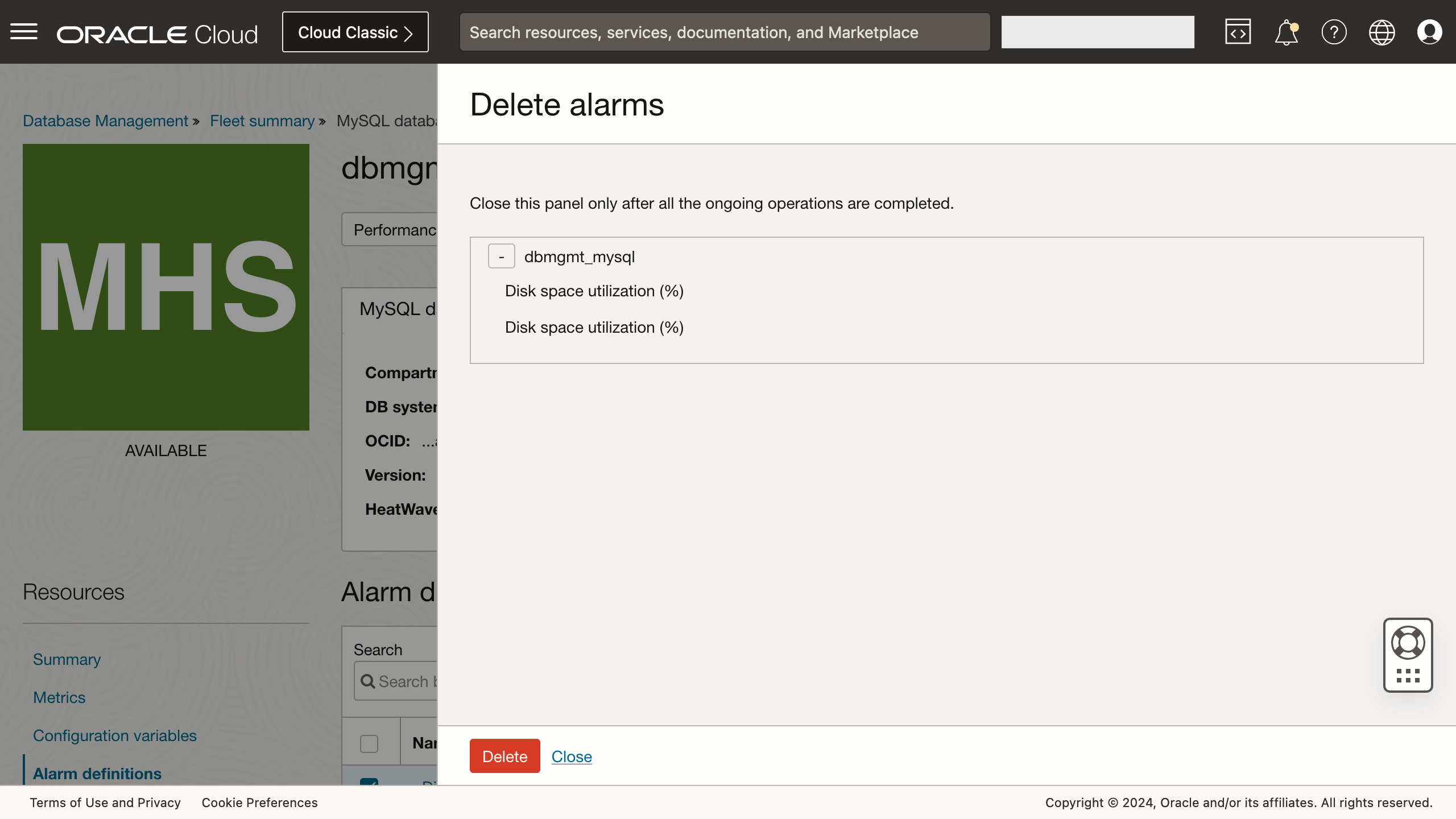
Summary
The alarm definitions feature eases the process of creating and managing alarms to monitor HeatWave MySQL DB Systems. It enables you to create Oracle-recommended alarms by making use of the standardized set of rules and thresholds, across multiple databases.
Additional Resources
Hands-on lab: Enable and explore Database Management for HeatWave MySQL
